|
I could not resist painting “Wash Day” on Menagerie Island. We forget that the families that lived in the lights had to wash clothes and tend to every day chores. This backyard was a little different than most. The light was built in 1875 of native sandstone, the tower was 61’ tall with a 4th order Fresnel Len attached to a two story house by a 12’ long entry way. John Malone, a bachelor was made head keeper, but he was single and told to find a bride. He did find a 19 year old young lady and they married and had 12 children during their stay. The family could only raise radishes and lettuce on the island, but had a garden on nearby Wright Island. Records show that seagull eggs played an important part of their diet totaling almost 1,500 a year. The keepers and assistants stayed on the island May-November. They wintered in Duluth, MN. The island was automated in 1913. The island is part of Isle Royale National Park. For more information go to www.lighthousefriends.com and for cards or prints go to www.michiganlighthouseart.com
0 Comments
Due to increased shipments of lumber from the port, the river mouth was widen and a light to mark it’s entrance was needed. The Cheboygan Crib Light’s 4th order Fresnel lens was lit in November 1884 at the entrance to the Cheboygan River. The tower is 33’ tall and the light could be seen 13 miles out into Lake Huron. In 1897, an assistant keeper was added to the Cheboygan River range lights and the two keepers were responsible for the assistant who stayed at the Crib at night in a small 2 room dwelling built for him.
In 1910, a 1200 pound fog bell was hung from a skeletal tower on the northwest corner. The bell weight had to be wound every 2 1/2 hours so the Stryker toll the bell at ten second intervals. The light was automated in the 1920. The crib and tower developed a definite lean. It was decided to remove the crib light to the foot of the pier in a lovely city park. The Great Lakes Lighthouse Keeper’s Association, in 2001, provided the labor and the City the materials to restore the Crib light to a sparkling white with red trim. This light is very accessible by car. Take time to enjoy the park and then visit the range lights nearby. The Holland Pier light started out in 1870 with a white wood structure with enclosed top and open bottom. It had a 5th order Fresnel lens. In 1875 an elevated wood catwalk was installed. This was upgraded in 1901 to a white steel structure with metal walk. Then in 1907, a white very large metal fog signal building with a large loud fog steam whistle and an apartment for 2 assistants above in the gabled upper story and a connective passage connected to adjacent pier light with new 4th order Fresnel lens. In 1936, a smaller square tower was erected between the pair of gables on the fog signal and entire building was painted cream with maroon trim!
The change to “Big Red” occurred in 1956 when the entire building was painted bright red. to meet Coast Guard requirements that right side pier lights must be all red. The light was decommissioned and finally signed over to Holland Historical Preservation Society. The 4th order Fresnel lens is in Holland Museum for all to visit. The light had faded to “Big Pink” in 2012 and there was no money to paint it. Two local business stepped up and painted it for free! Go to www.lighthousefriends.com for more detailed history. For prints and cards of Big Red go to website www.michiganlighthouseart.com Passage Island Light was first lit it’s 4th order Fresnel lens in July 1882. The light marked a critical point for vessel traffic headed in and out of the Thunder Bay Area. The octagonal tower stands 44’ tall and is an integral part of the house. The tower and the house are built of rough stone in a Norman Gothic style similar to White River lighthouse. The house is only 60’ above lake level and Lake Superior storms have sometimes washed over the lighthouse breaking windows and washing away anything left outside.
With the installation of the steam whistle, which set a record for running 902 hours and consuming 50 tons of coal in 1907, extra keeper’s were needed. 3 keeper’s and the head keeper’s family lived in the 7 room house. The light was automated and station closed in 1978. It is the only light station on Lake Superior that could boost a helicopter pad. The title to the light was transferred by the Coast Guard to the National Park Service in 1996. The public may see the light on a tour ferry from Rock Harbor, Isle Royale, Mi. Prints and cards are available. For more detailed information go to www.lighthousefriends.com/passageislandlighthouse
Eagle Harbor Lighthouse is 16 miles west of Cooper Harbor, MI. on the Keweenaw Peninsula. The area was settled in 1844 and soon after large veins of copper were found. A light was needed to mark the harbor. In 1851, a light and keeper’s quarters was built with a 4th order Fresnel Lens and lighted with a sperm oil lamp. The construction was very poor and it was replaced in 1871 with a new red brick 1 1/2 story 7 room dwelling with the tower built into the north east corner ( McGuilpin Pt. And White River are the same plan.)
in 1895, a fog signal building was built. In 1907 the signal blasted 544 hours with the keepers shoveling 43 tons of coal to keep it going.. In 1968, the lens was replaced with an electric beacon and then automated 1980. Since 1982, the Keweenaw County Historical Society has maintained 4 museums at the site. Visit www.keweenawhistory.org for hours and details about visiting the light and museum hours. For a print or cards go to my website www.michiganlighthouseart.com An all time favorite, Big Sable Lighthouse on Lake Michigan is nestled in the dunes and jack pines. It is a quick 2 mile walk on a beautiful trail. We enjoyed this walk on a Friday afternoon in October. The late autumn sun, breeze off the water and the smell of a campfire in the distance added to the scene and we turned the bend and there was this magnificent tall black and white lighthouse. We arrived after a 5 pm and could not go up in the tower, but after the walk, I was happy to sit on a bench by the base of the light and soak up the sunshine and listen to the waves.
The light was built in 1867 and is an active light. Standing 112 feet tall, this stunning iron-clad black and white lighthouse and adjacent keeper’s quarters dominate the shoreline. The light was automated in 1968. The Third Order Fresnel lens is on display in Ludington. The list is located in Ludington State Park, 8 1/2 miles north of the City of Ludington, MI. On Lake Michigan. The state part does require a fee or pass to enter. The grounds and tower are open May-October and cared for by the SPIKA which is a group of citizens that have taken on the care of the Big Sable Light, the Ludington Breakwater light, Little Sable light and White River Light. To read about these lights go to www.spika.org find out the hours and how you can be a volunteer keeper and live on the 2nd floor of the keeper’s quarters. For more history go to www.lighthousefriends.com. For prints and cards go to my website: www.michiganlighthouseart.com White River Channel Light is west of White Hall, MI. on a narrow neck of land that overlooks the river entrance into White Lake from Lake Michigan.
It was established in 1875 to replace a pier light that had been built earlier. It is a cream tan brick octagon tower integrated into the keeper’s quarters built in the Norman Gothic Style with a fourth order Fresnel lens. It’s the first keeper, Captain William Robinson helped construct the light. For a short time it had a female keeper, Francis Johnson, from 1948-1954. The light was deactivated in 1960. It became a fine museum in 1966 and easily accessed by car. There is a path to the beach via a short walk through the dunes. For more details go to: www.lighthousefriends.com. and for a print or cards go to my website www.michiganlighthouseart.com Thanks to a gentleman that took the time to take short videos of this light with his cell phone while circling it in a zodiac and then presenting me with a flash drive to down-load the images to my computer, so I could accurately paint the lighthouse. I have become very attached to Waugoshance with it’s unusual history, appearance and ghost (presumably now huddled in the tower staircase).
The lighthouse is doomed unless something extraordinary is done to save it. It was deactivated in 1912 , when Grey’s Reef lighthouse built in a deeper part of the passage replaced it. The light has suffered unusual damage. In 1942, the U.S. Navy used the light for bombing and target practice for its fighter pilots. The keeper’s house and all wood framing was burnt and protective steel plates fell away leaving it unprotected to the Lake Michigan storms and recent high water. It was built in 1851 in 12’ of water on a large shallow shoal the juts out about a mile in the most dangerous part of the Straits of Mackinac. It stands 63’ tall and has the remnants of a “bird cage” lantern room, only 1 of 3 on the Great Lakes that is still there, it now acts as a bird cage for a flock of cormorants. A non-profit organization tried to raise funds to stabilize a large hole in the foundation to keep it from toppling over, but they have had to abandon the project. It would be a shame to see it destroyed into a pile of rubble constantly reminding us of our inability to innovate and save it. While it still stands off shore in shallow water near Wilderness State Park, it can not be easily or safely approached. It can be viewed from a distance. For more history go to www.lighthousefriends.com for prints and cards of this painting go to www.michiganlighthouseart.com |
AuthorMichigan Artist, Anita Saviko, Her goal is to research the histories and paint all Michigan lighthouses/range lights past and present, a total of spprox. 150 lights. Categories
All
Archives
July 2021
|
|
Michigan Lighthouse Art Gallery
107 S Putnam St. Suite #209 Upstairs Keller’s Plaza Williamston, MI 48895 Phone: 517-256-8335 email:[email protected] Copyright All Images © 2023 |
About
|
Shop |

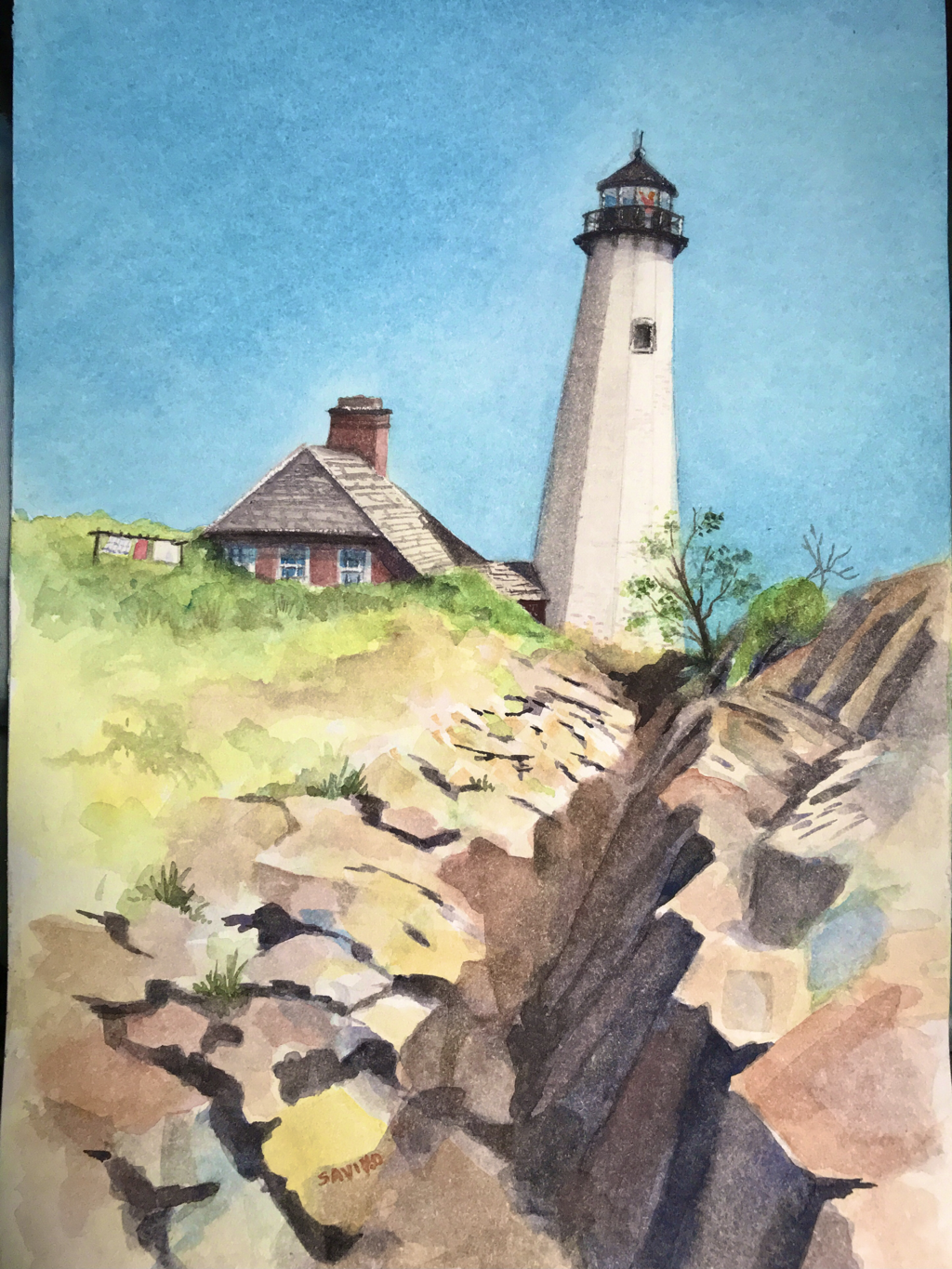
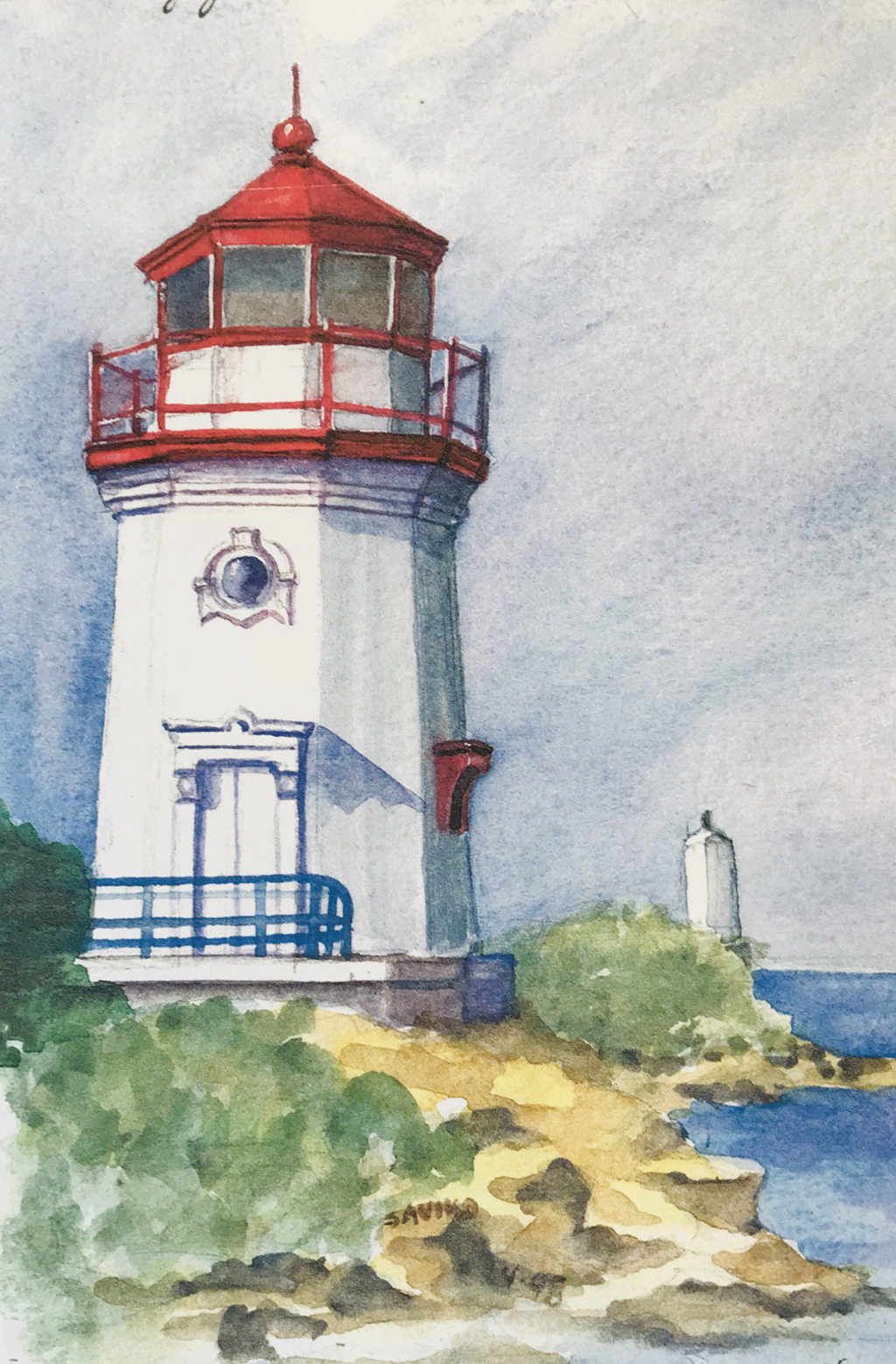
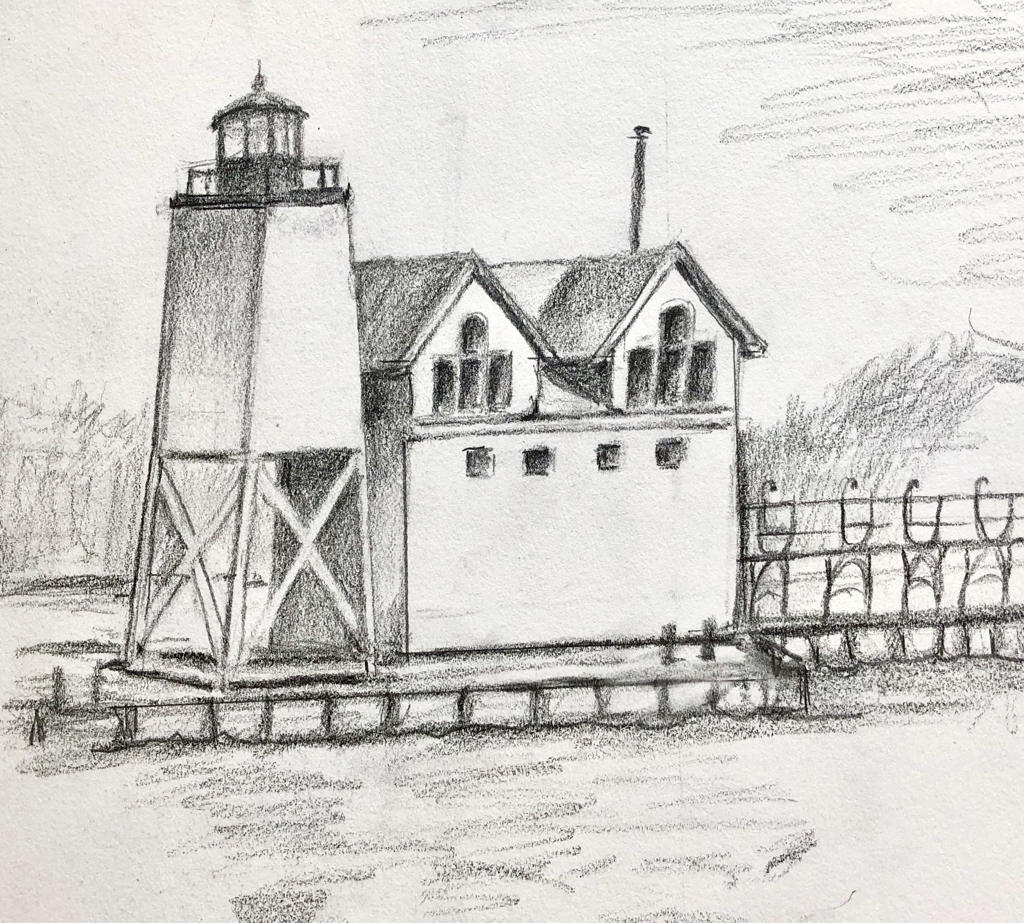
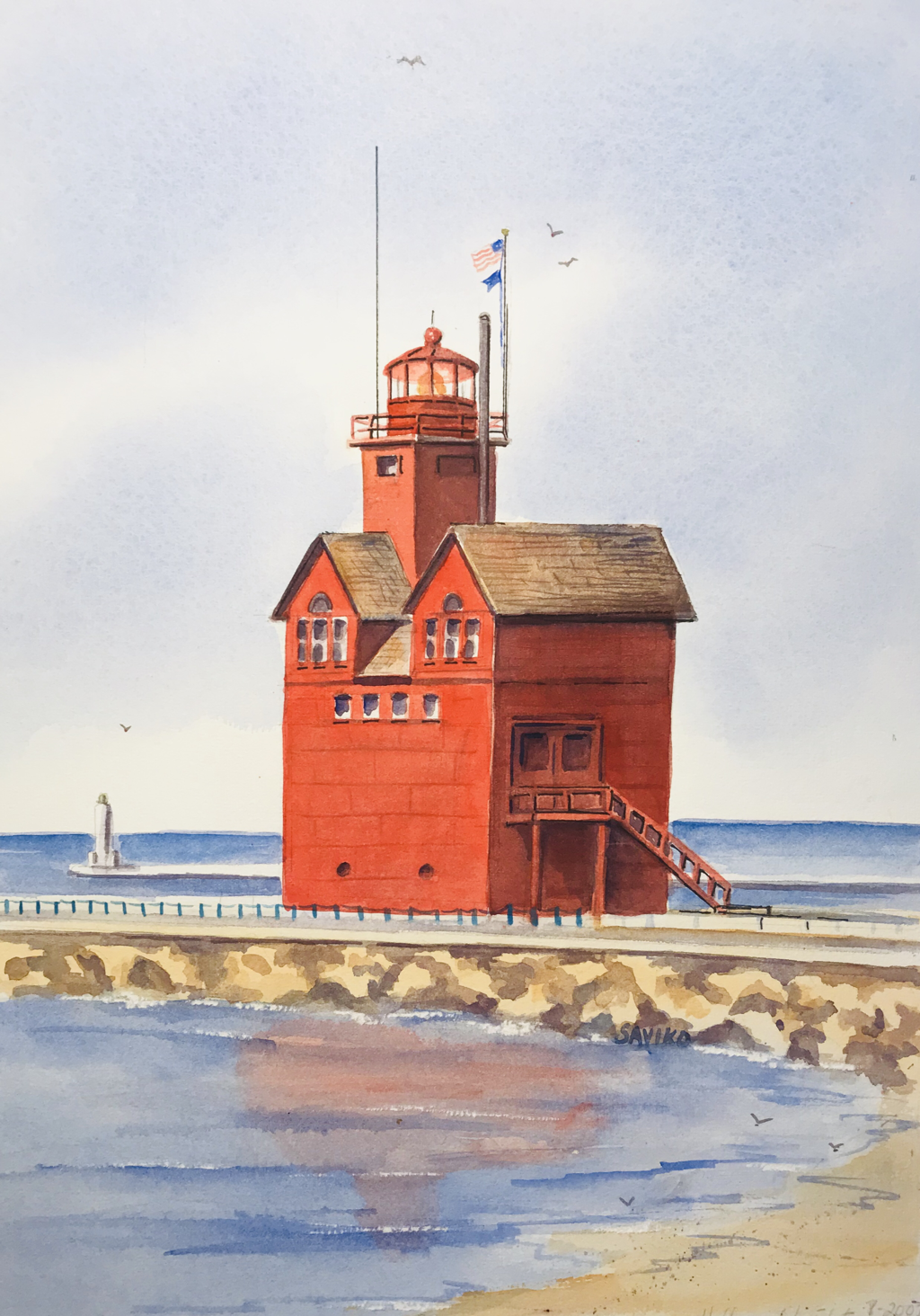
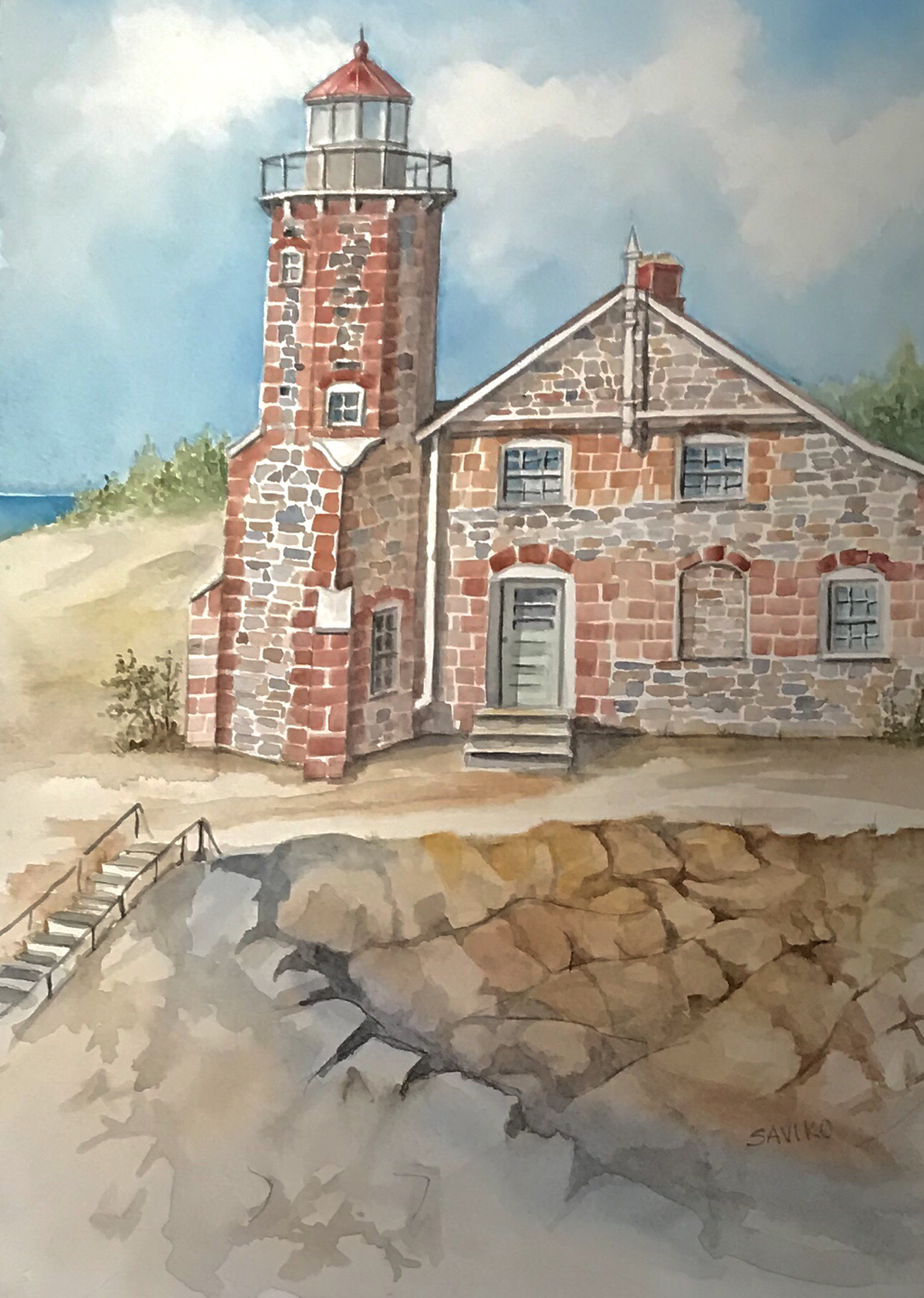
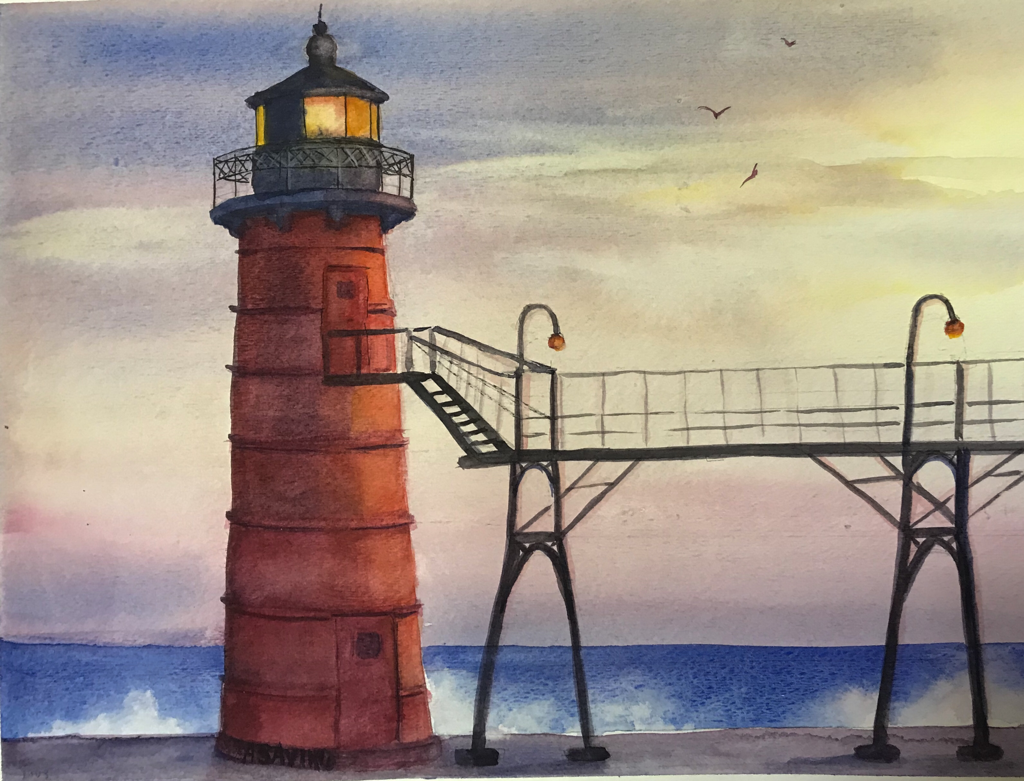
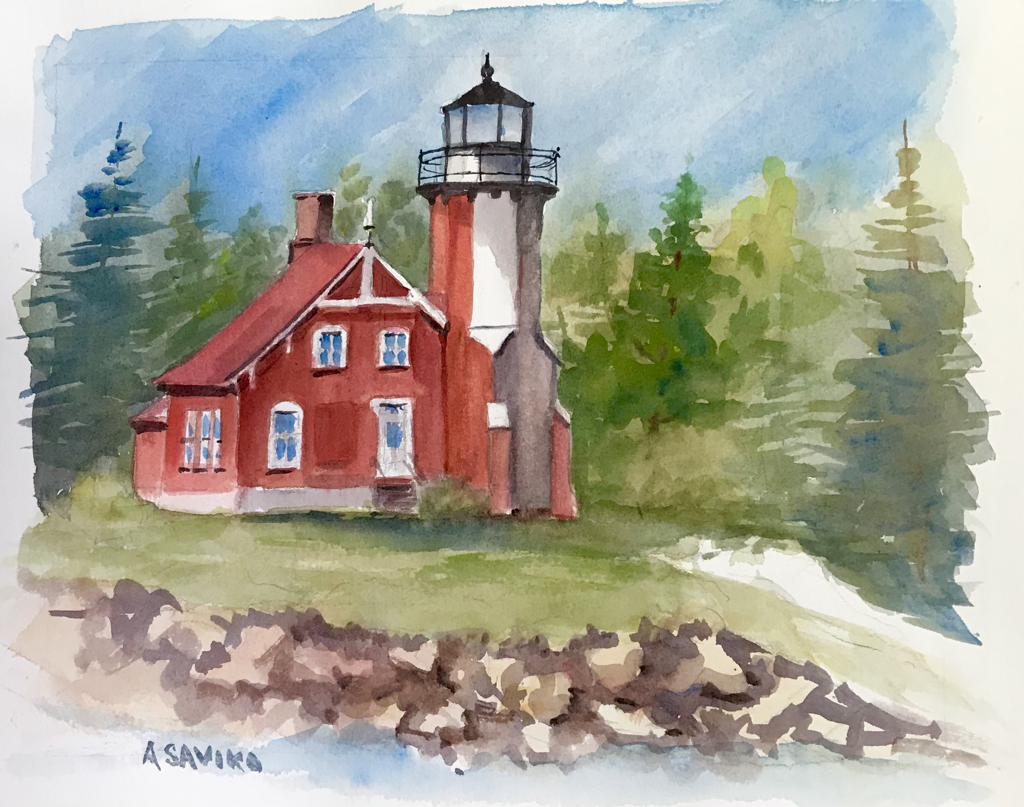
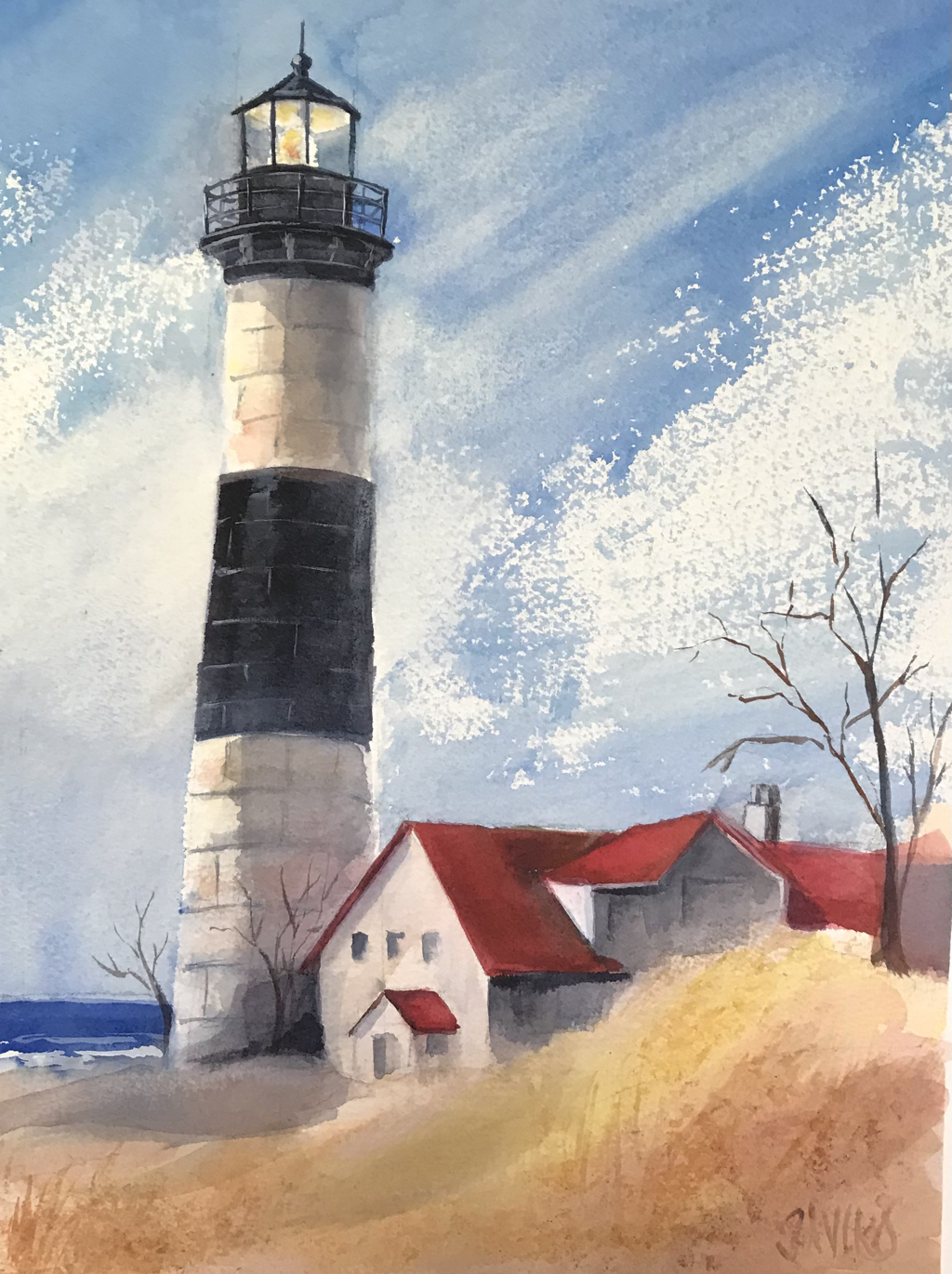
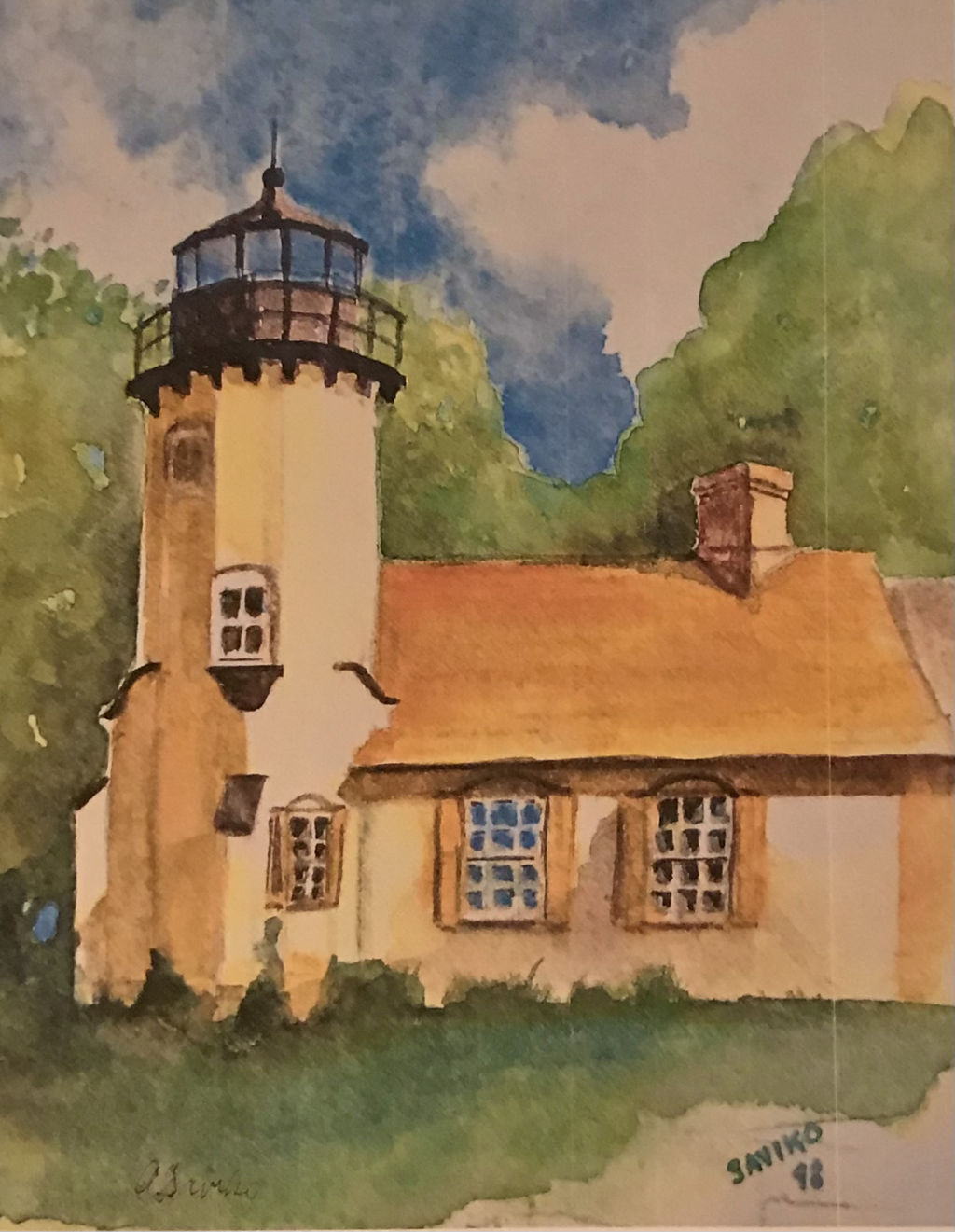
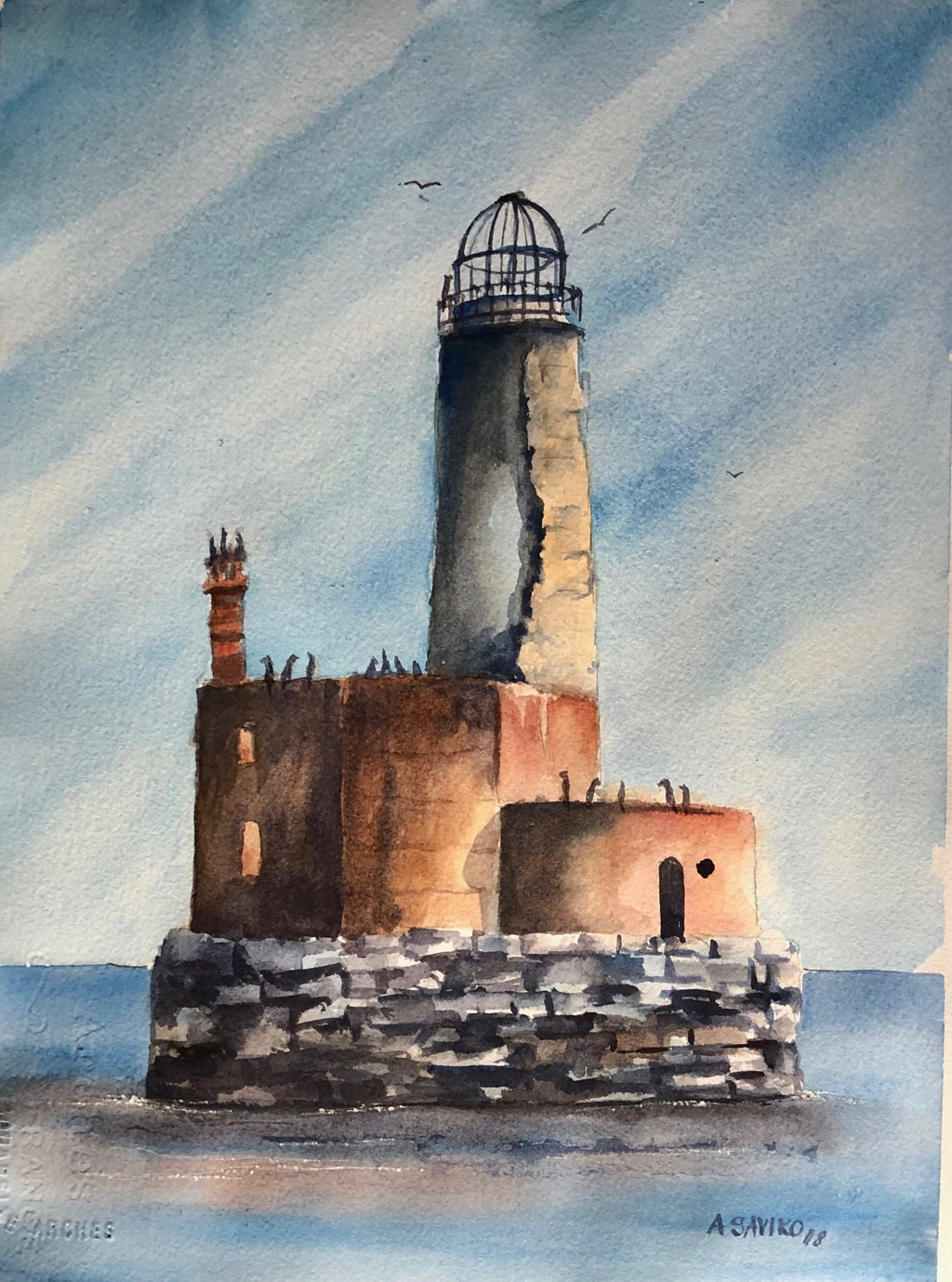
 RSS Feed
RSS Feed
